Other Technology | September 10, 2023
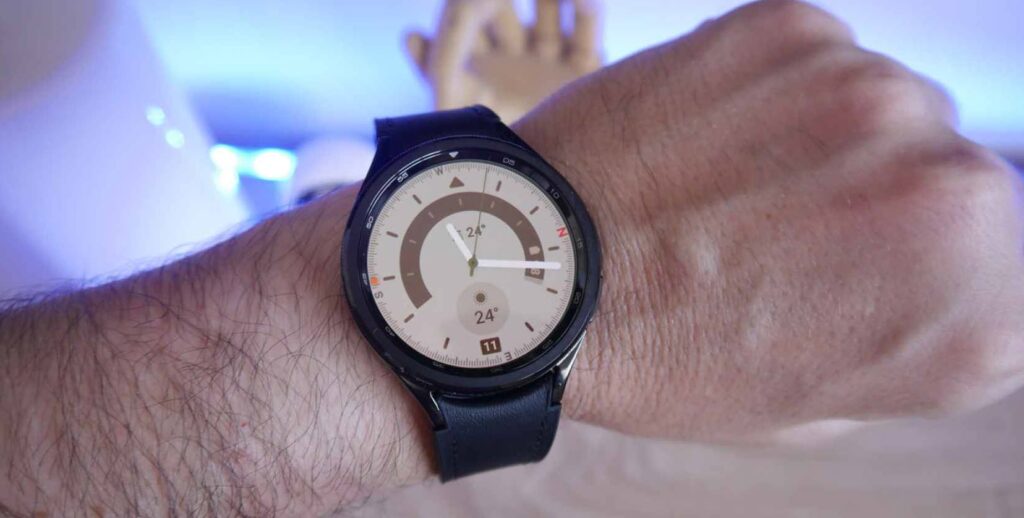
Smartwatches are increasingly being used, even surpassing cheaper but less capable smart bands. When it comes to smartwatches, Apple and Samsung are the top sellers, and in the Android ecosystem, the South Korean company is the standout, obviously.
This year, two new watches were announced at the launch event in Seoul, the Samsung Galaxy Watch 6 and the Samsung Galaxy Watch 6 Classic, which is the model we’ve spent a few days with and whose analysis we bring you. These two models are the updated versions of last year’s watches, the Watch 5 and Watch 5 Pro.
In this case, Samsung has decided to package all its technology into two very similar watches that advocate different aesthetics. The Samsung Galaxy Watch 6 is more modern, with more minimalist straps and case, while the Watch 6 Classic opts for a more traditional watch aesthetic, featuring a physically rotating bezel, something we haven’t seen since the Samsung Galaxy Watch 4 Classic two years ago.
Both are available in two sizes and two prices. The Samsung Galaxy Watch 6 starts at 319 euros for the 40mm variant without LTE, while the LTE model costs 369 euros. The 44mm version is priced at 349 euros (without LTE) and 399 euros (with LTE). The Galaxy Watch 6 Classic is priced at 419 euros for the 43mm variant and 469 euros for the LTE option. The other two 47mm models are priced at 449 euros for the non-LTE version and 499 euros with LTE.
Samsung hasn’t included the word “Classic” in the name of the model we’re analyzing by chance. They know that many watch users highly value a subdued and unobtrusive aesthetic, so they’ve decided to create a model that goes fairly unnoticed visually.
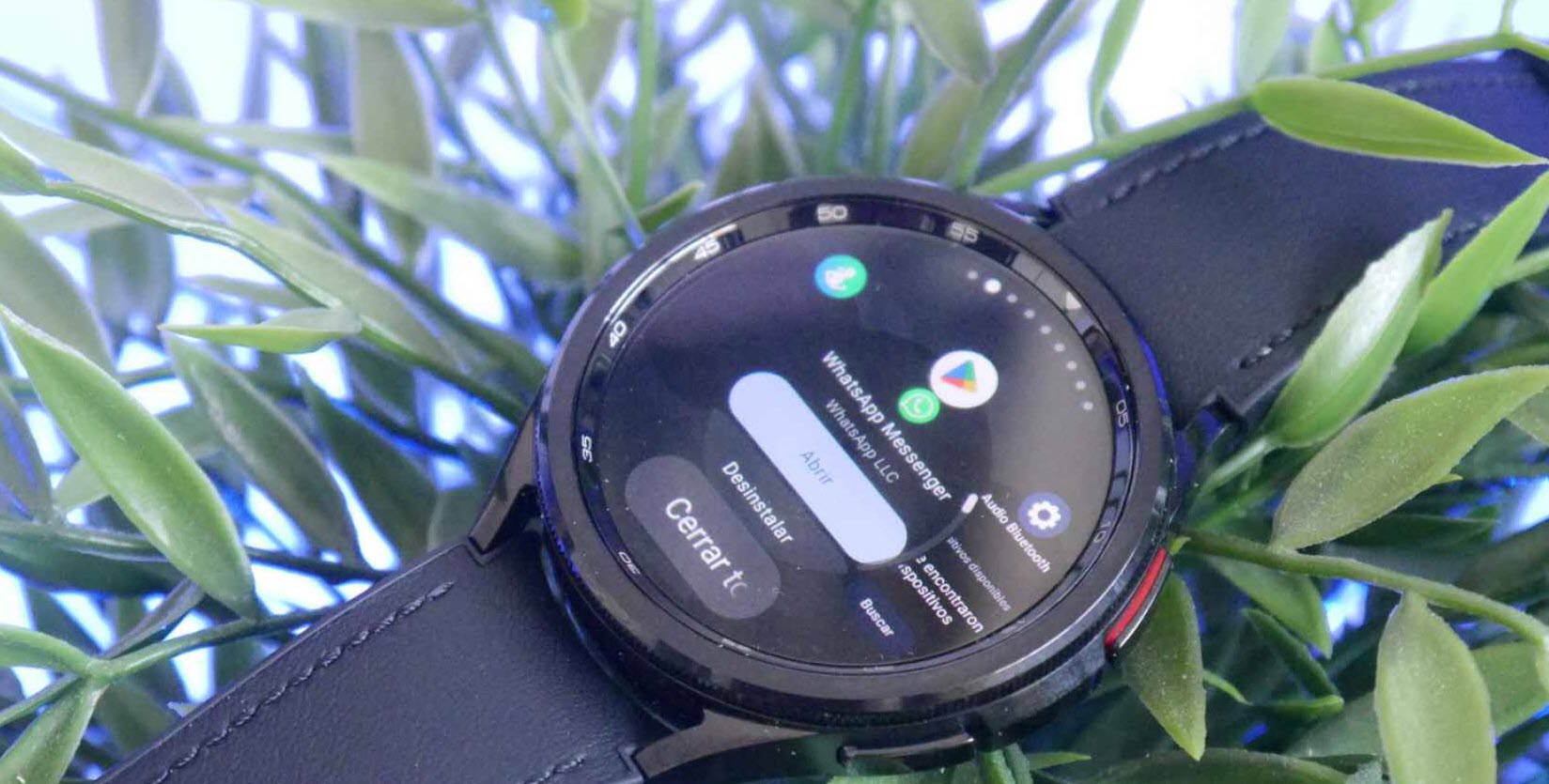
The large screen stands out, larger in this 47mm version than in others, but with extremely thin bezels. This is a hallmark of all watches in this generation. Samsung has managed to increase the screen size without increasing the watch case’s dimensions. The case is constructed from stainless steel.
Additionally, within that bezel, there’s a rotating edge for controlling the interface, similar to the crowns found on watches like the Apple Watch or the TicWatch Pro 5, which protrudes slightly and provides some protection to the glass against accidental knocks. However, it doesn’t include a rotating button, just two regular buttons on the right side that can be customized. The upper button is for going to the home screen, and the lower one is for opening the multitasking menu, allowing actions with long presses or double presses. It’s also somewhat bothersome that the edge protrudes when performing the swipe-down gesture to open quick settings. This isn’t the case with the Watch 6, which has a digital bezel that doesn’t protrude.

Additionally, this internal watch allows us to open Samsung Pay with a long press whenever we want, but we can’t set Google Wallet as the default app for the button if we wish to. And this is the recurring theme of the watch—it’s designed to be used within Samsung’s ecosystem, but we’ll get to that in due time. At the bottom, we have heart rate, blood oxygen saturation, and temperature sensors. The watch can now measure skin temperature, as well as the temperature of other objects placed on it. The accuracy is acceptable.
During our hands-on with these watches, Samsung boasted of having created a new easy-to-use strap system called One Click. This system allows us to put on and remove straps similarly to how it’s done on the Apple Watch.
The best part about this is that it doesn’t render traditional 22mm straps incompatible, so we can continue using the ones we had from previous models or buy any from a regular store. Of course, all new Samsung straps with this system are compatible.
The watch’s panel is AMOLED with a 1.5-inch diagonal. The resolution is 480 x 480 pixels, and the viewing quality is impressive. Even under sunlight, it doesn’t pose any issues. It features automatic brightness adjustment with a peak brightness of 2000 nits, and we can enable Always On Display, although that will obviously affect battery life. It’s worth noting that an LTPO panel, which would provide longer battery life, is missing.
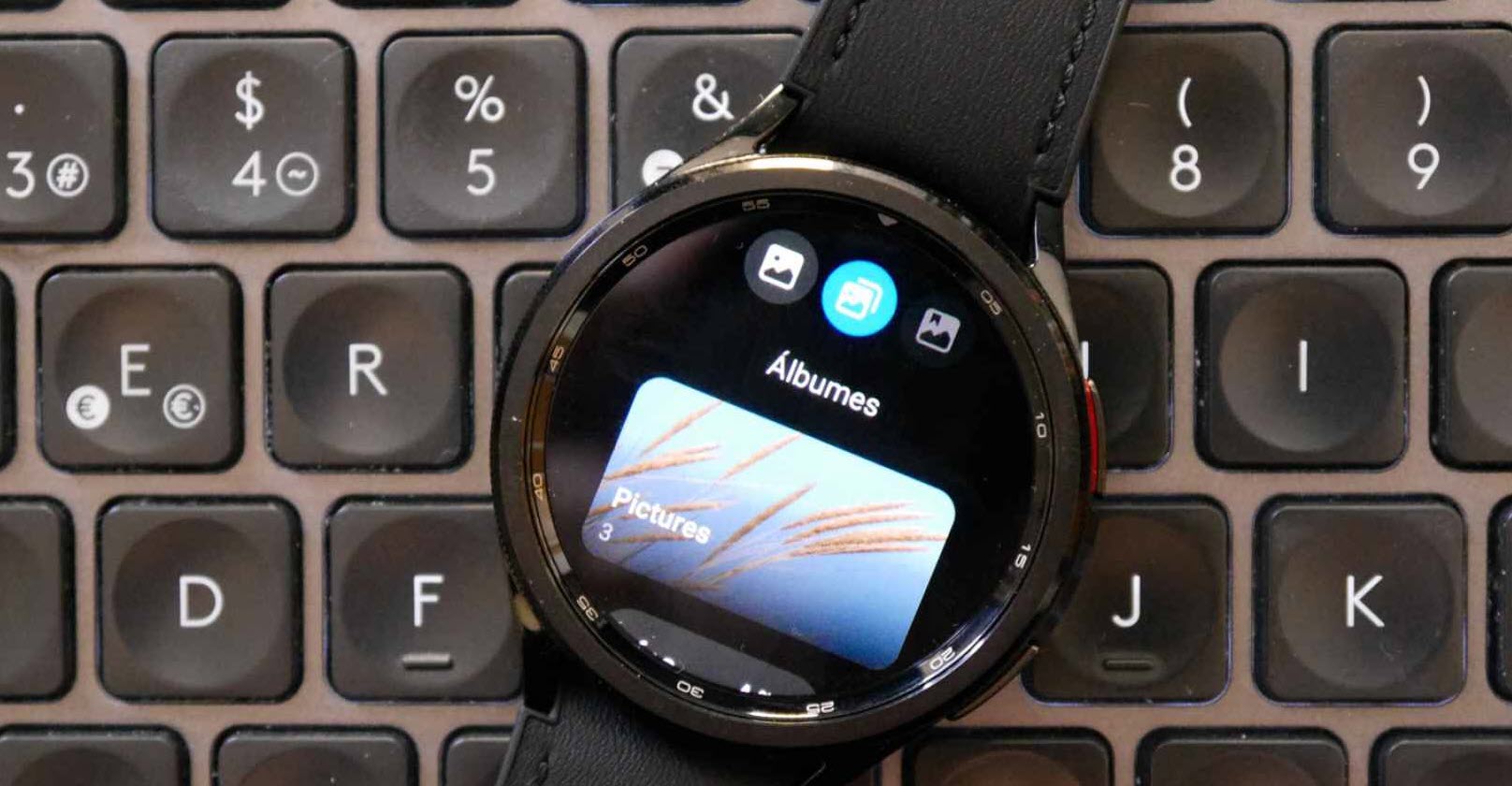
The performance is provided by a new Samsung processor, the Exynos W930, which claims to be more powerful and efficient than the previous generation. We don’t deny this, but it doesn’t match Qualcomm’s performance in watch processors, especially with the Snapdragon W5+ Gen 1. This is noteworthy because Samsung’s watch is considerably more expensive.
Smartwatches have become the best way to monitor our health. The Samsung Galaxy Watch 6 Classic allows us to track calories, steps, heart rate, sleep quality, and blood oxygen saturation.

Distinctive features include the ability to take electrocardiograms using the watch itself and measure body temperature, which is especially useful for women as it accurately tracks menstrual cycles. Sleep monitoring has advanced in this watch, primarily because the watch’s interface now displays much more data, making it less common to need to open the app on the watch to see daily figures. However, more data will be available on the smartphone.
We can measure blood pressure, as we could in previous models, although to use this function, we need to calibrate it with a medical device that can professionally measure blood pressure the first time. Once calibrated, we can use it whenever we want.
As is logical, we can make calls and speak on this type of watch, both in its LTE version with eSIM and in the normal version, which uses Bluetooth connection to the watch. Sports tracking is well developed, and in addition to choosing the sport we want, we can create our own exercise if it’s not in the listed options on the interface. We can use GPS to track our routes if we’re training outdoors.
This monitoring interface can be minimized at the bottom if we want to use the rest of the watch to respond to notifications or open apps, without losing the information count. Besides an altimeter and barometer, the Watch 6 Classic has a compass and automatic fall detection, which will notify our emergency contacts if we have an accident and don’t respond to the watch’s prompts to cancel the call to those contacts.
The battery capacity is larger than what we’ve seen in previous models. About 50mAh more might seem like a small difference, but in a device of this size, it’s notable. With normal use, we can get up to two days of battery life if we’re not using it intensely. However, if we enable real-time parameter measurements, the autonomy will be much shorter.
Similarly, if we exercise, use GPS, and make phone calls, the battery life won’t be the same, as is logical. Here, we see that this is a good watch that can provide up to 48 hours of battery life and rarely leaves us hanging on the same day. Charging is done with Samsung’s proprietary charger, which is included in the box.
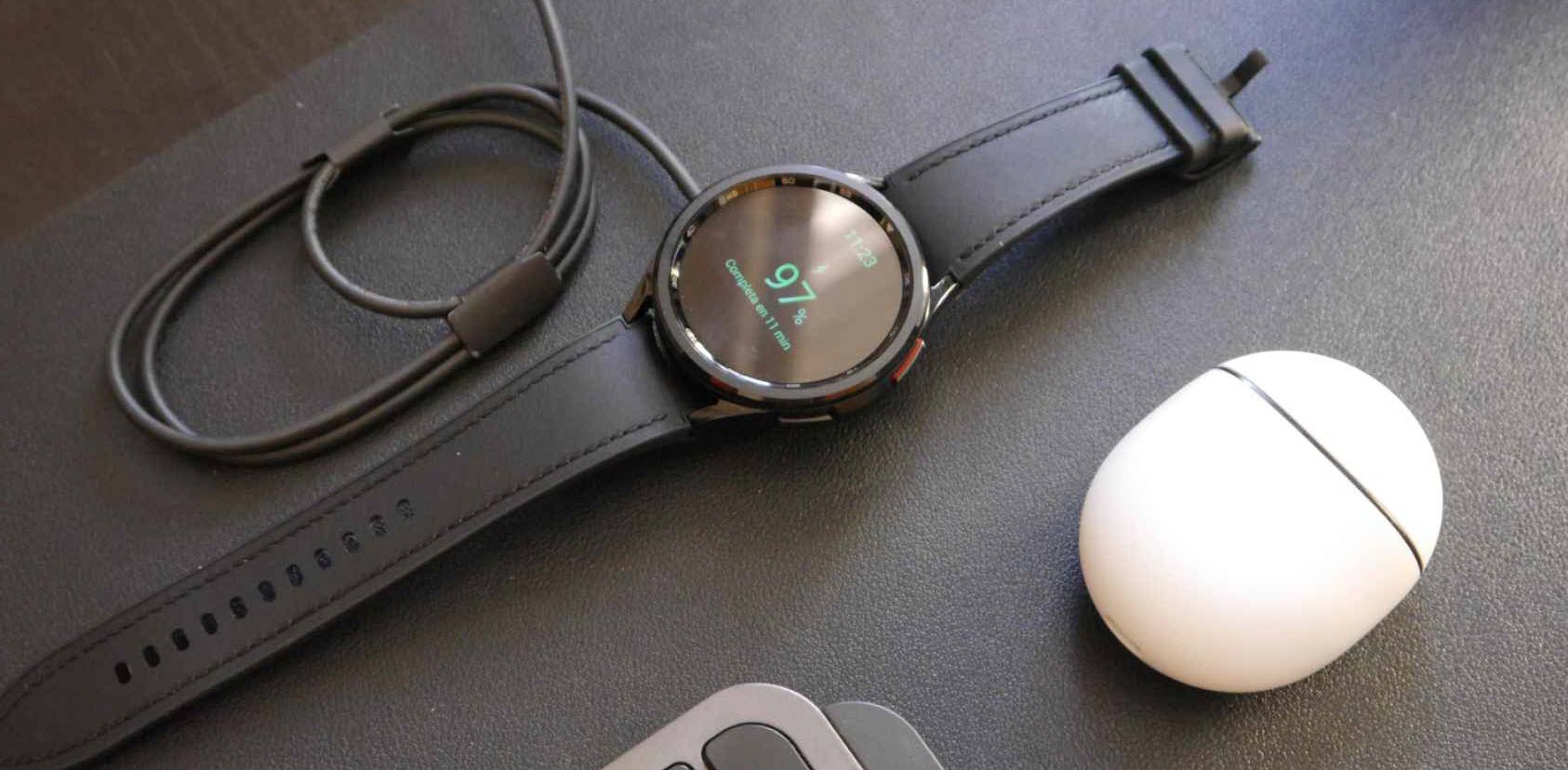
The issue is that if battery life is important, TicWatch offers a watch for a lower price that has many of this watch’s functions but with a battery that lasts roughly twice as long. But what we’ve liked the least is the charging speed. Watches like the Ticwatch, Huawei’s, or OnePlus’ offer much faster charging speeds. Here, we have to be without the watch for over an hour to fully charge it.
Samsung introduces Wear OS 4 on these watches, accompanied by One UI 5 for smartwatches. There aren’t many visual changes compared to previous models, it must be acknowledged.
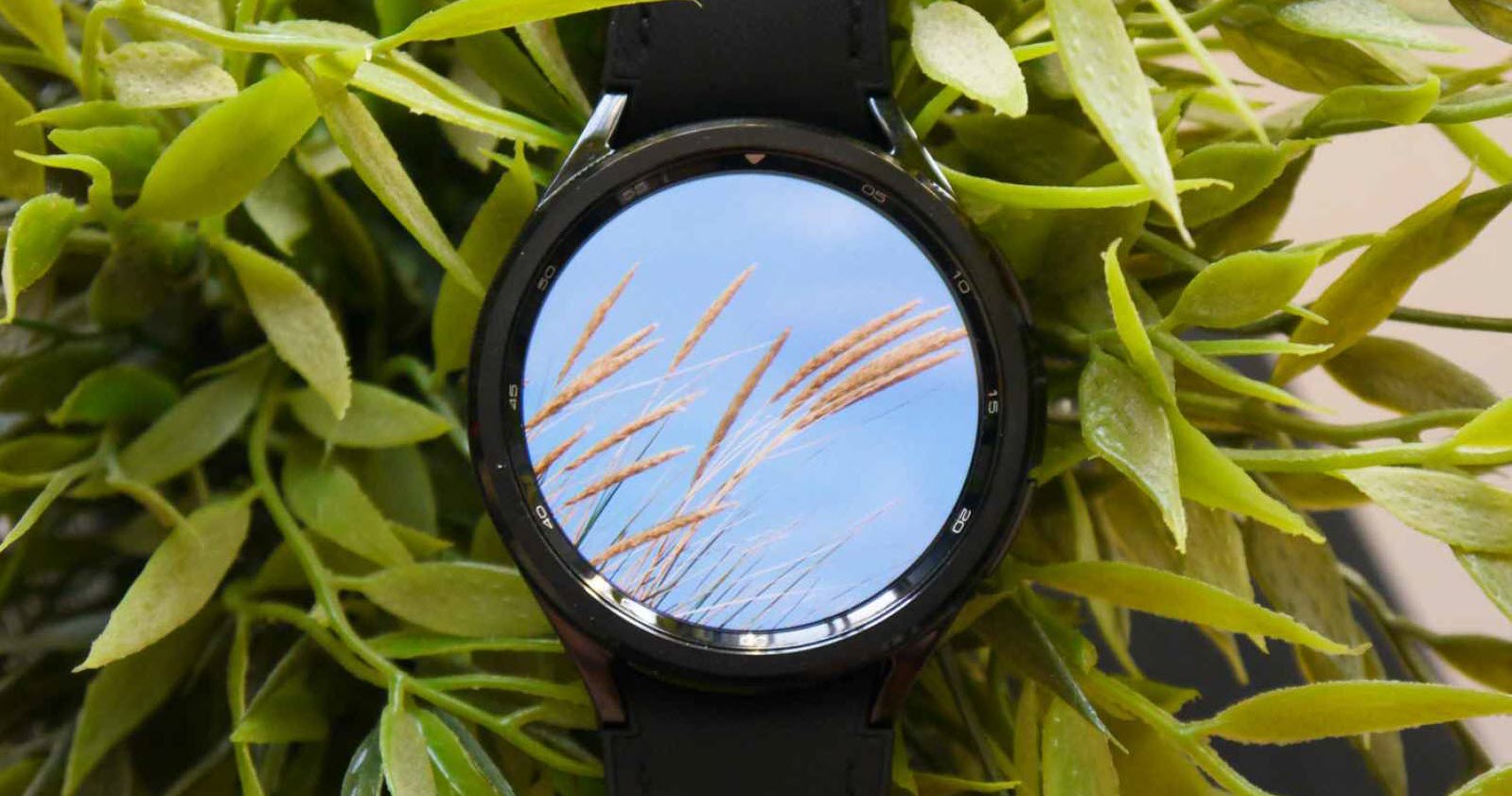
The customization options remain the most striking part, with numerous watch faces that allow for changing colors, complications, and shortcuts, etc. Even the official watch faces have an AoD version that allows for an always-on display with lower battery consumption. Furthermore, it’s evident that Samsung has worked on the interface because it offers the best aesthetics of all brands using Wear OS.
Bixby is included as the intelligent assistant, and it’s quick to perform certain actions like setting a timer or an alarm, but the recurring problem is that hardly anyone uses Samsung’s assistant.
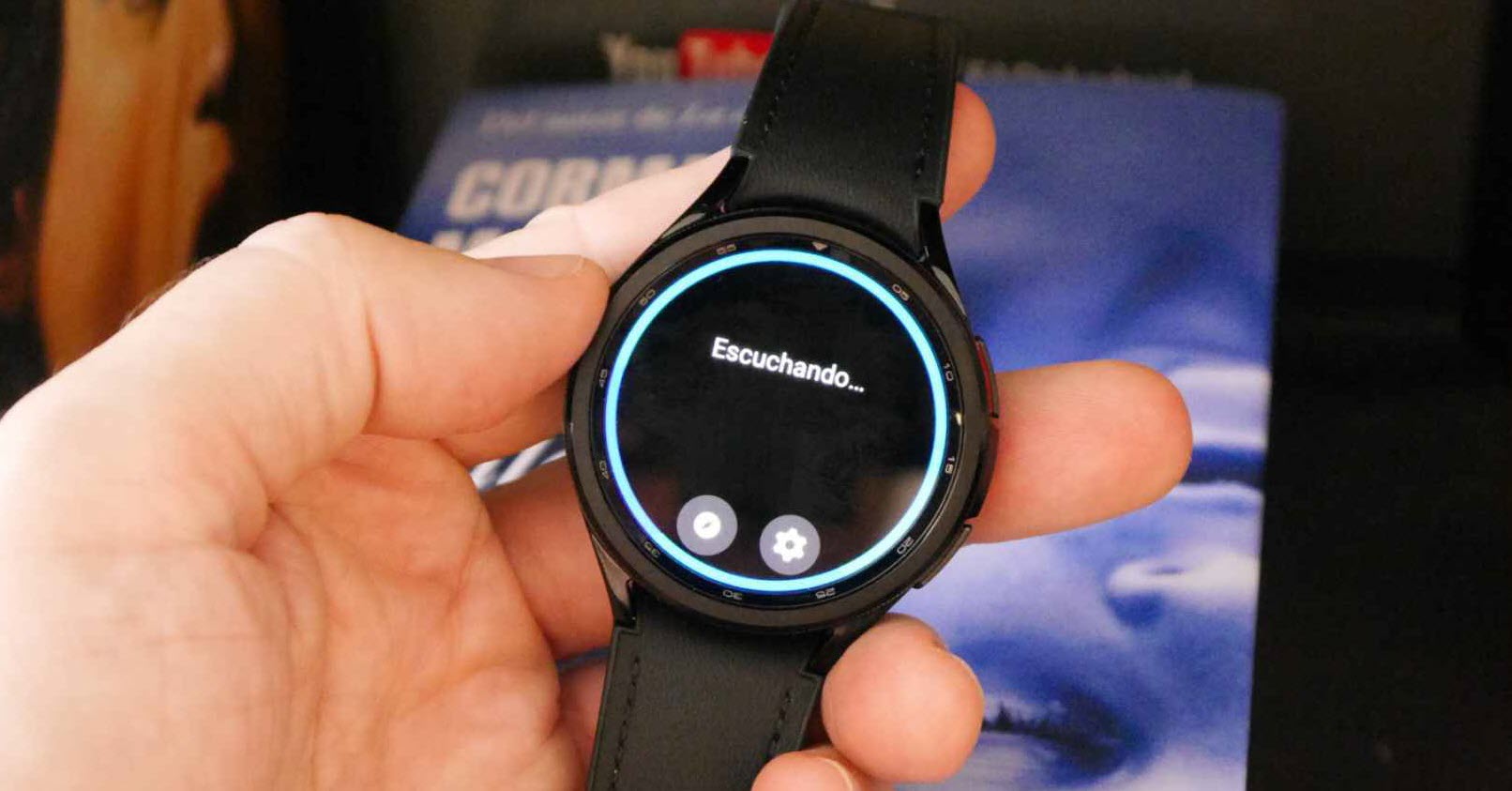
As is logical, with Google Play Store available, we can use compatible apps like WhatsApp or Google Maps. However, probably due to an issue with their previous versions, we haven’t been able to get WhatsApp to work, although we’ve seen units that have, so it’s either a problem with the latest app version or our watch.
A few years ago, Samsung embarked on a particular path where it increasingly emphasized its ecosystem. We saw with tablets and their phones how using multiple devices from the same brand made daily experiences much more comfortable.
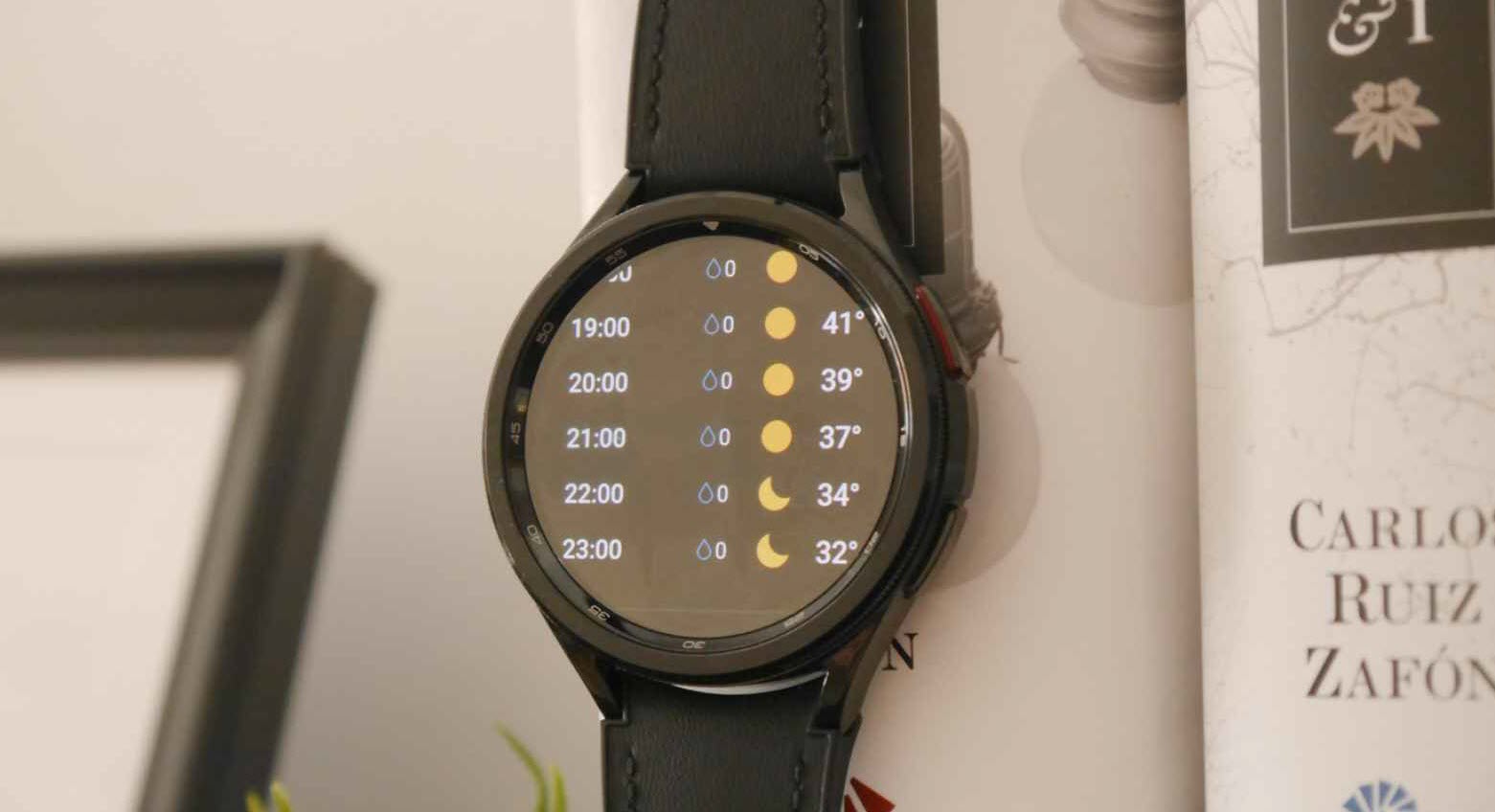
Something similar happens with watches. There are functions reserved for using Samsung watches, like using the watch screen as a camera viewer or having a simpler initial setup, which is much heavier on other manufacturers’ phones. We spent almost 20 minutes trying several times.
It seems like Samsung wants its watches to be the almost obligatory choice for those using a company phone. The integration is great, and the price is in line with what’s asked for in other brands. Furthermore, one of its main rivals, the Pixel Watch, is absent.
For those with a Samsung phone, the Watch 6 Classic is more than a decent and complete watch. It’s one of the best options available. However, other models like the TicWatch Pro 5 win by far in terms of battery life. For those with phones from other brands, Samsung watches are an option, but they don’t stand out enough to be the recommended choice.